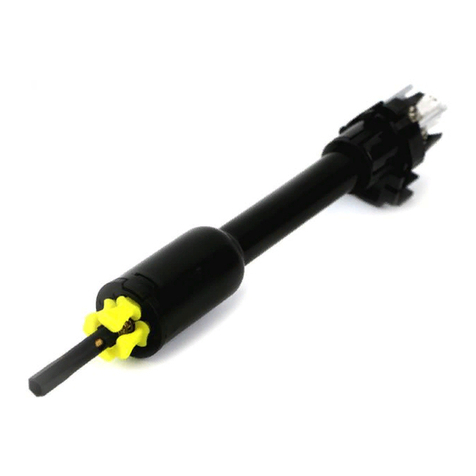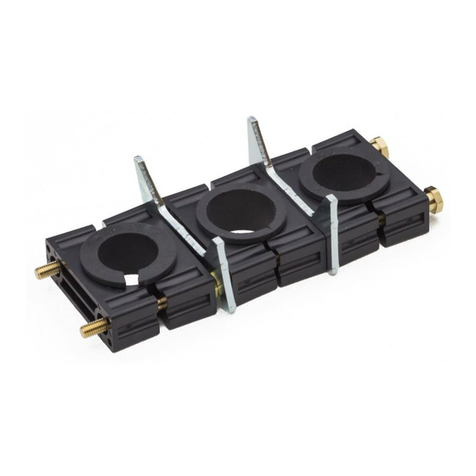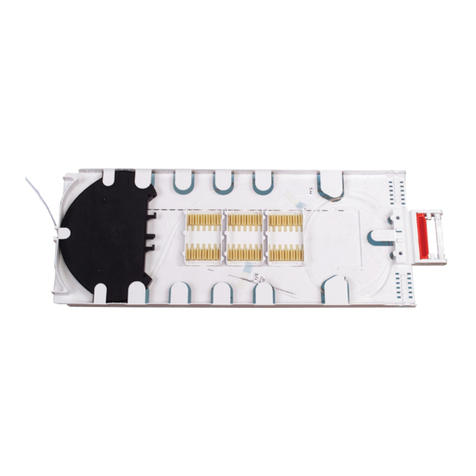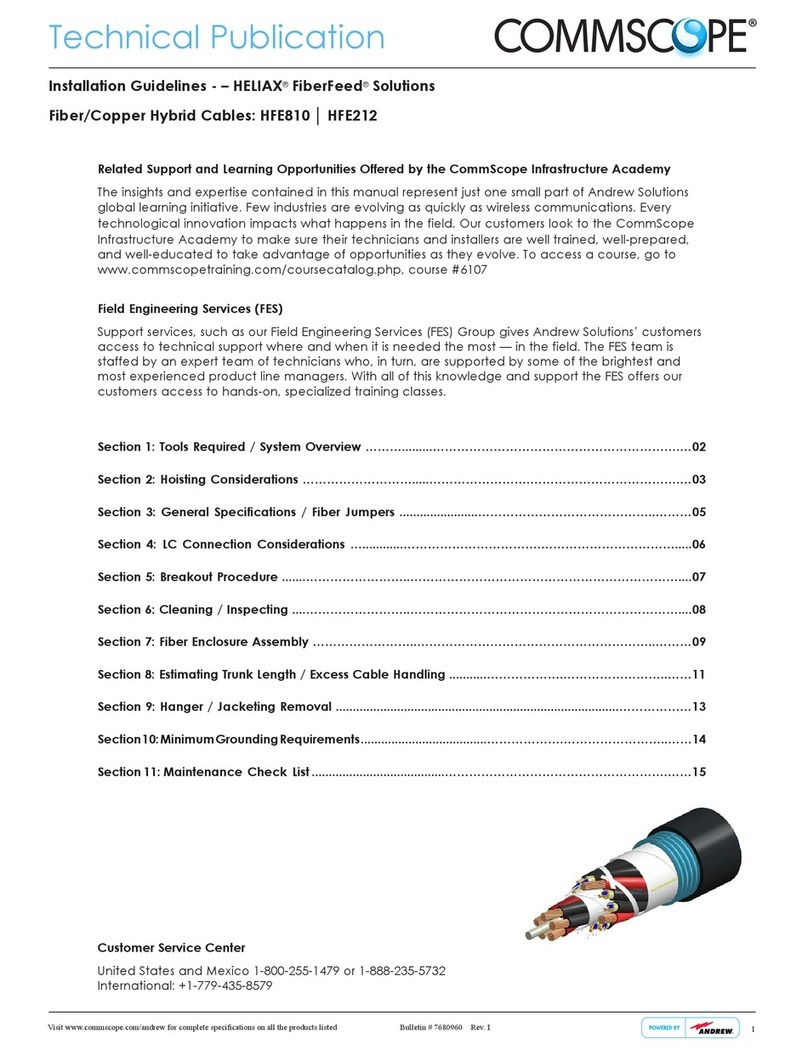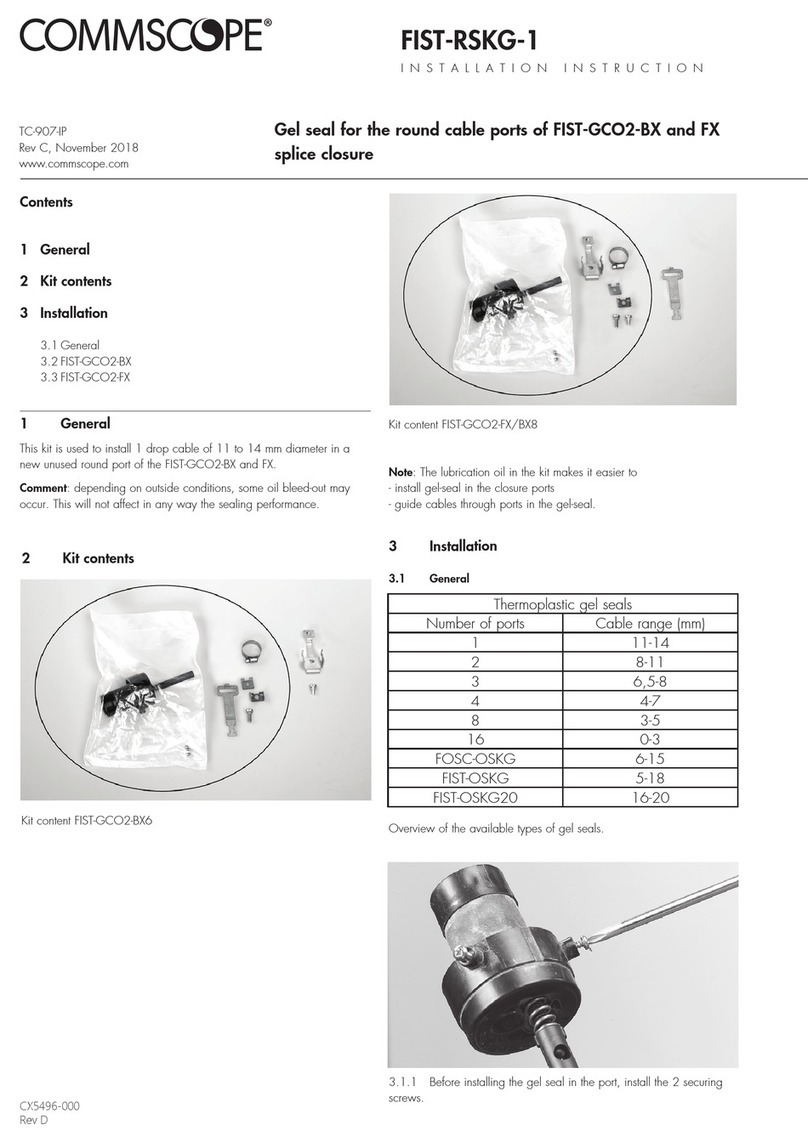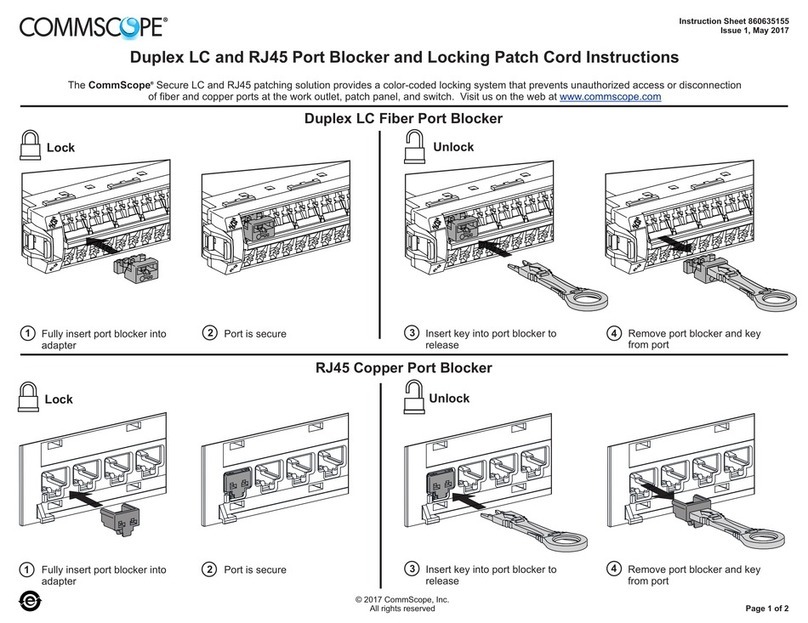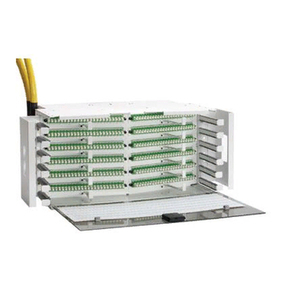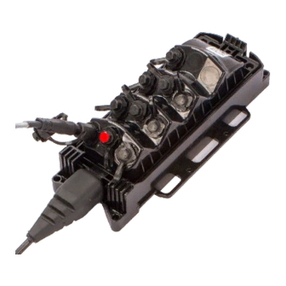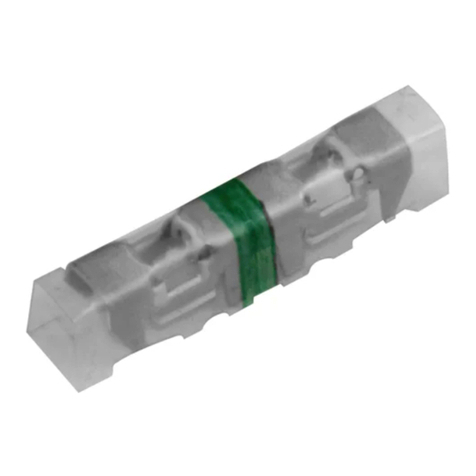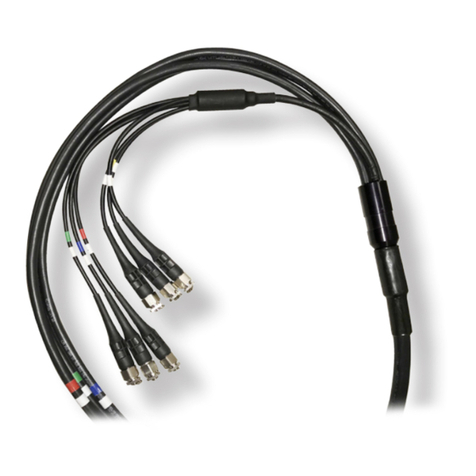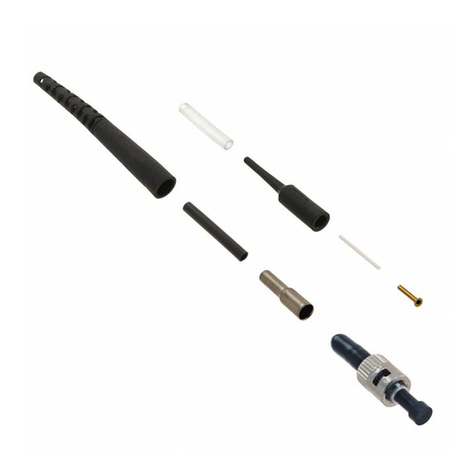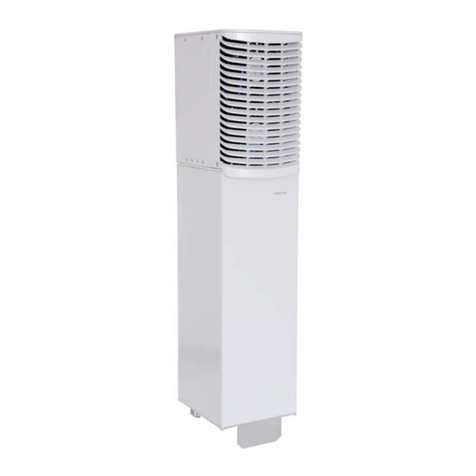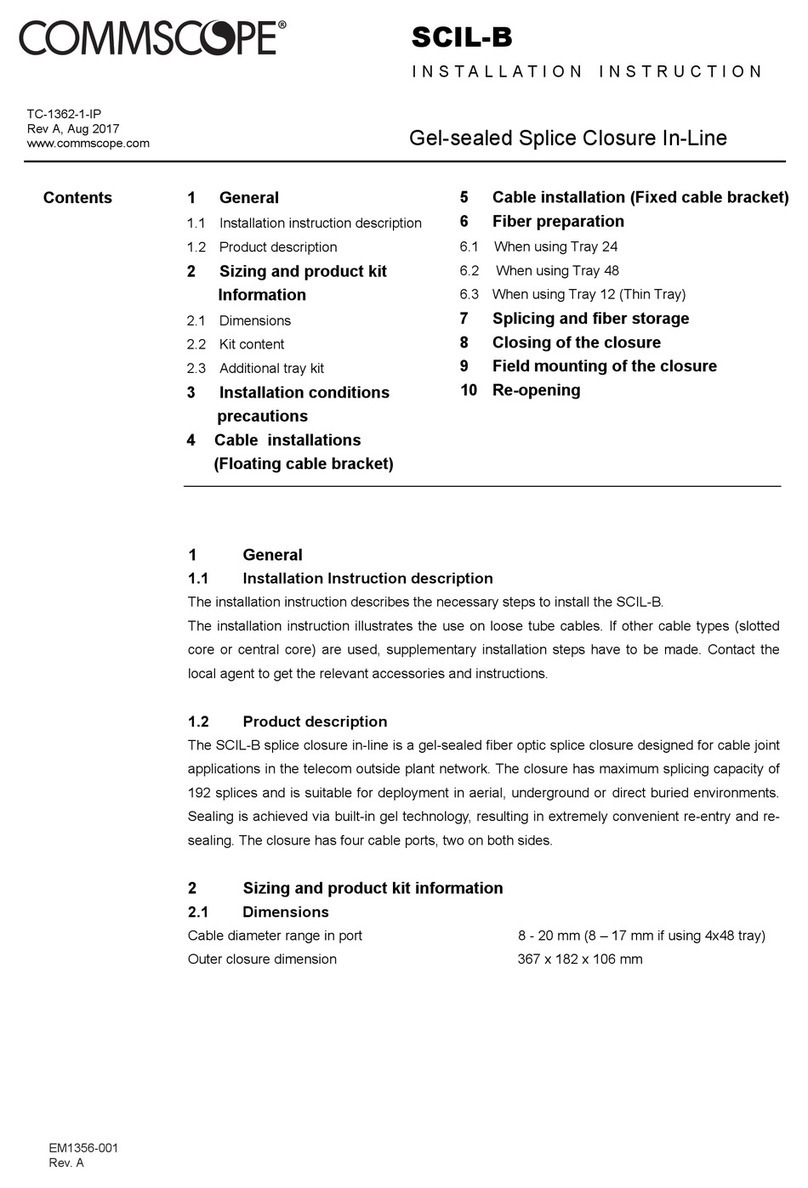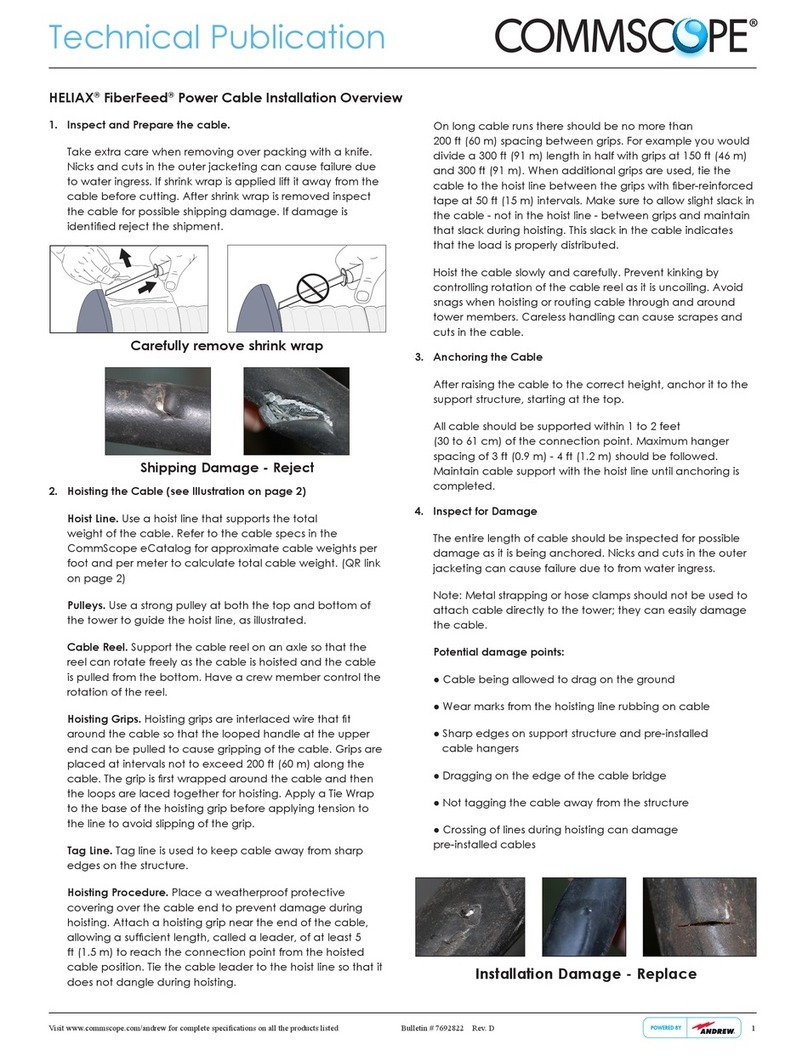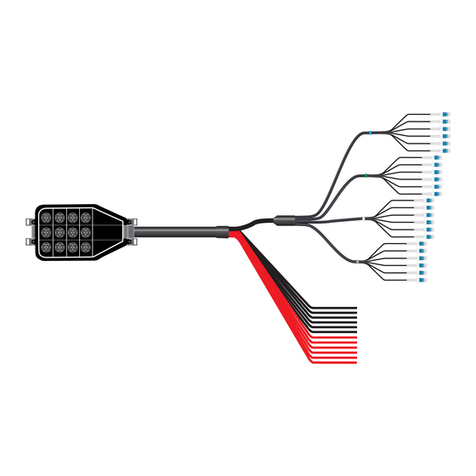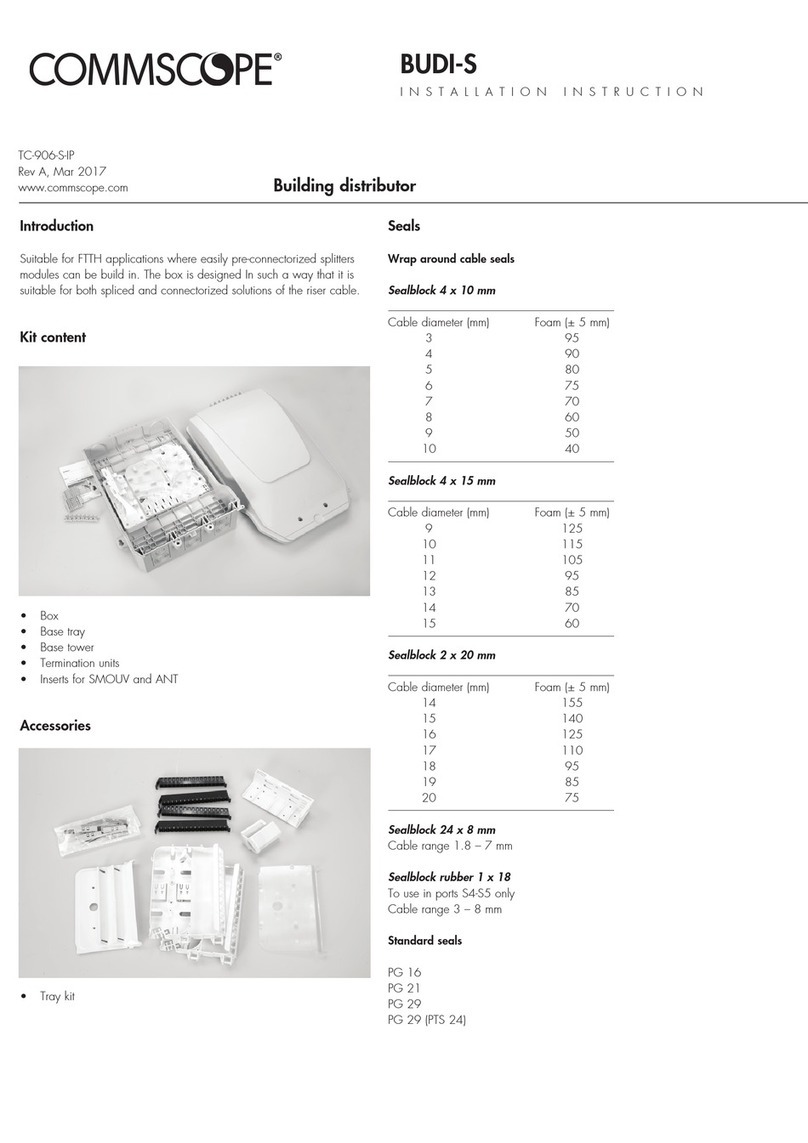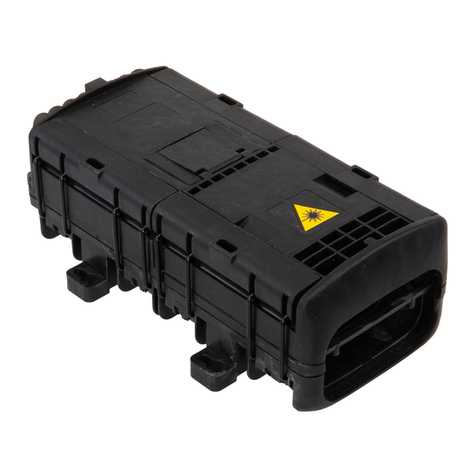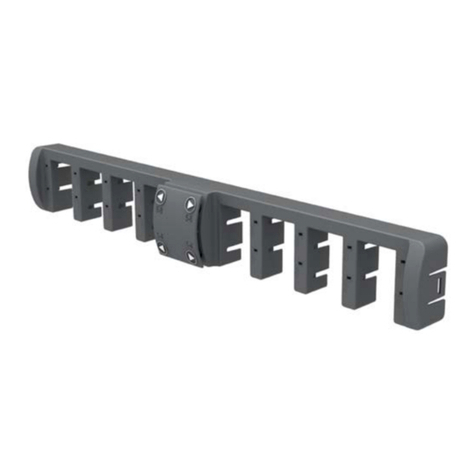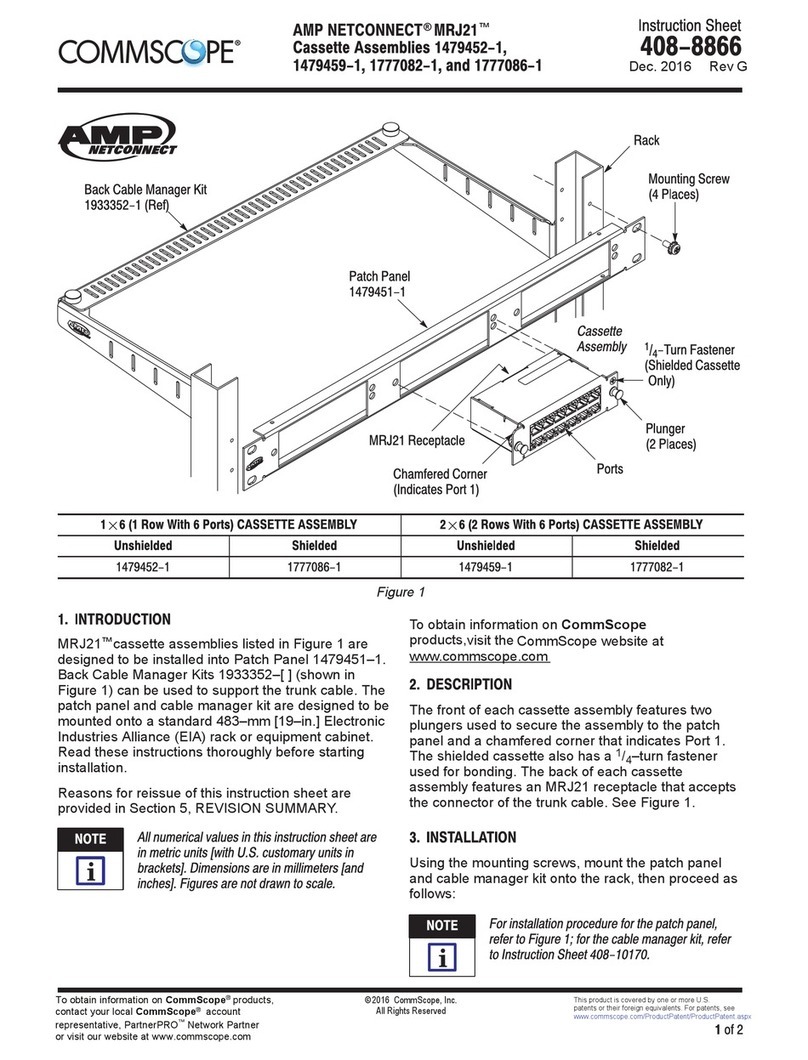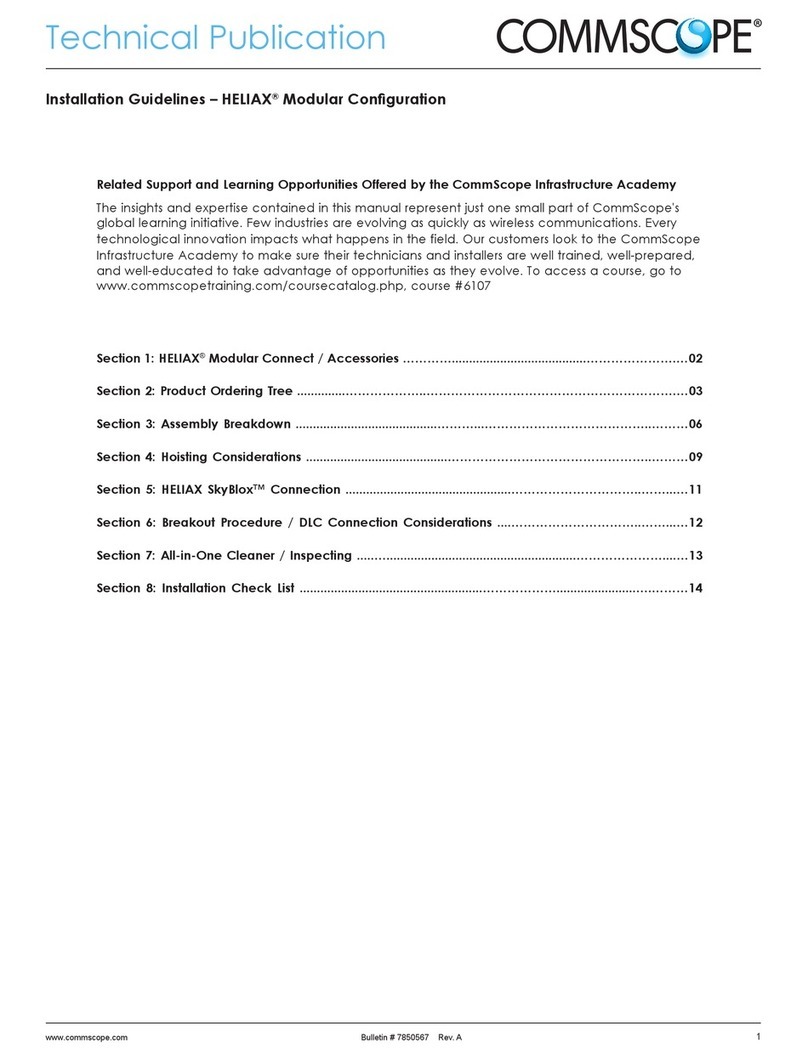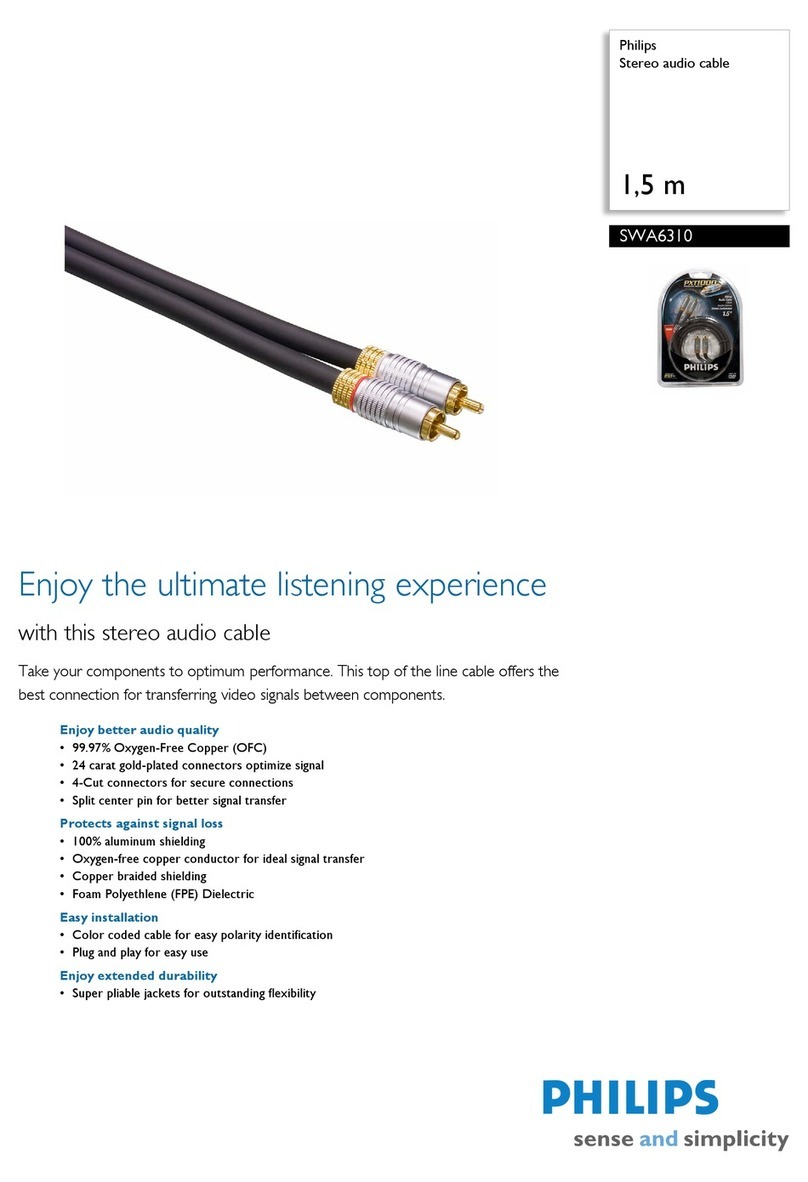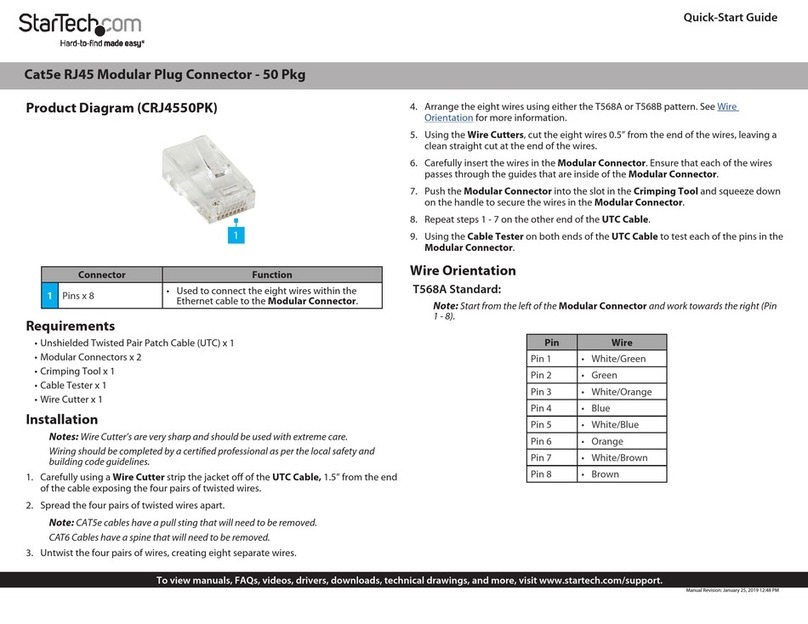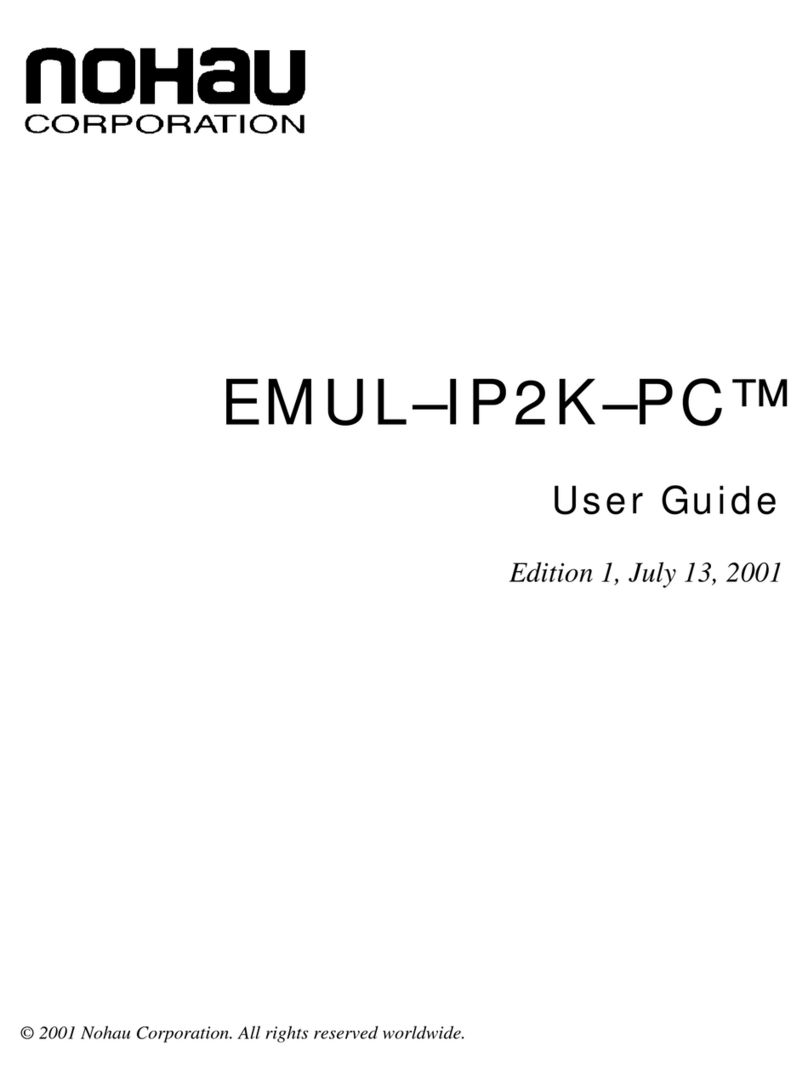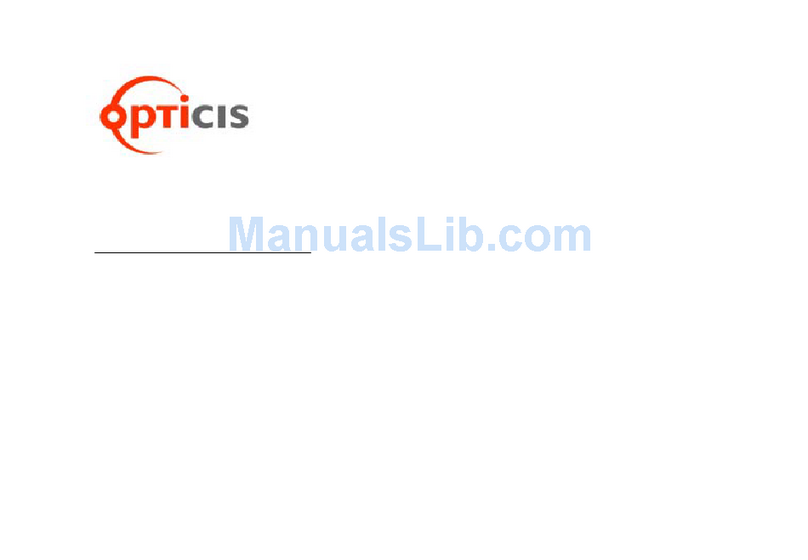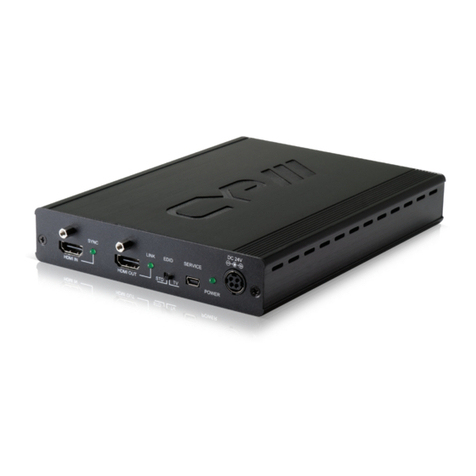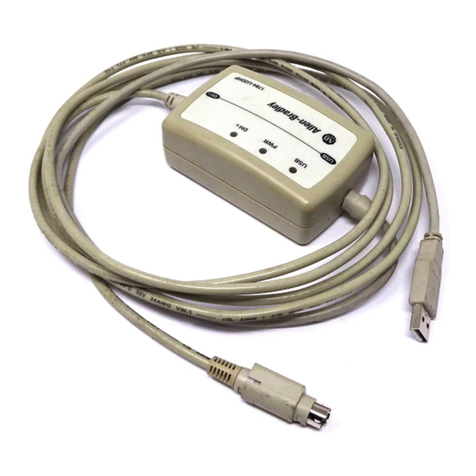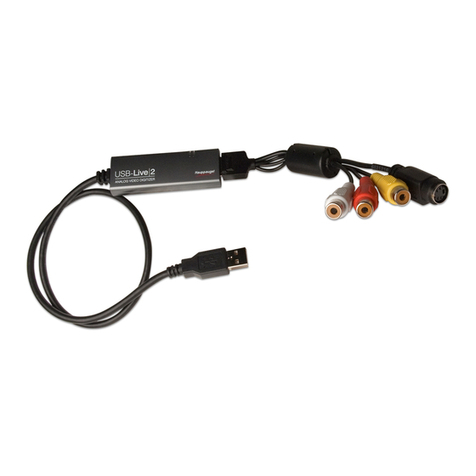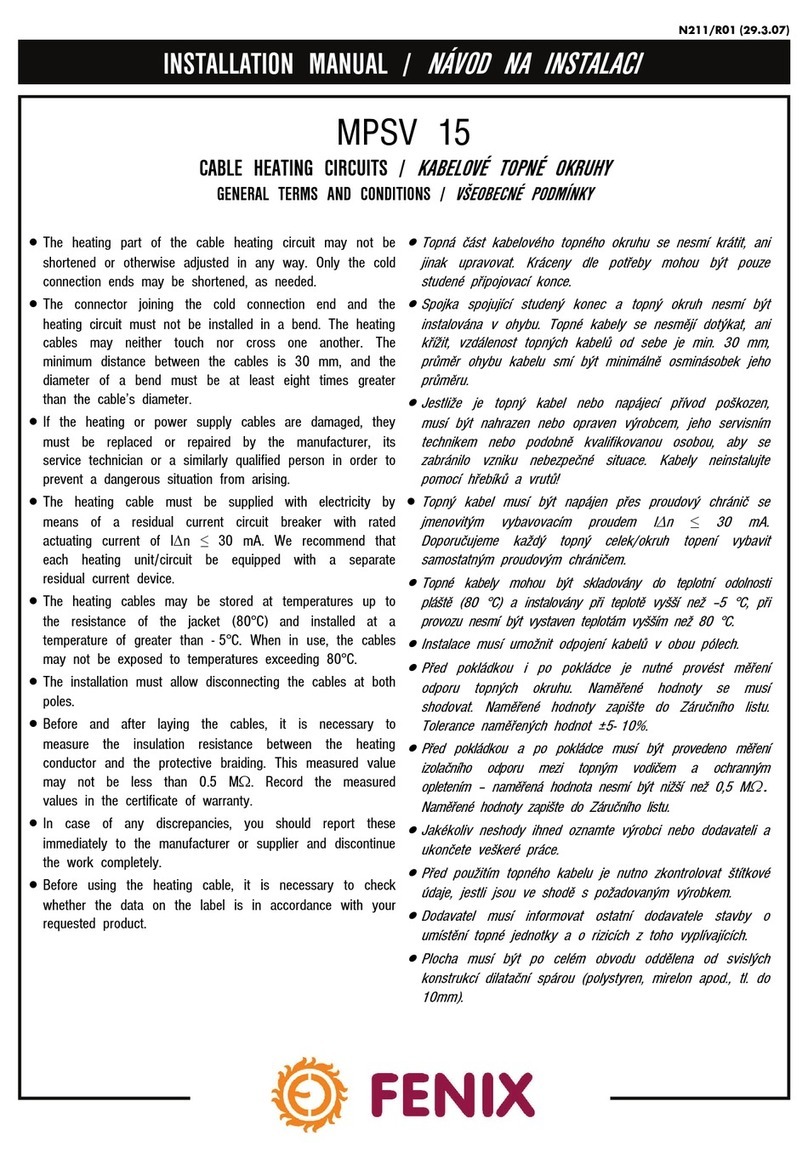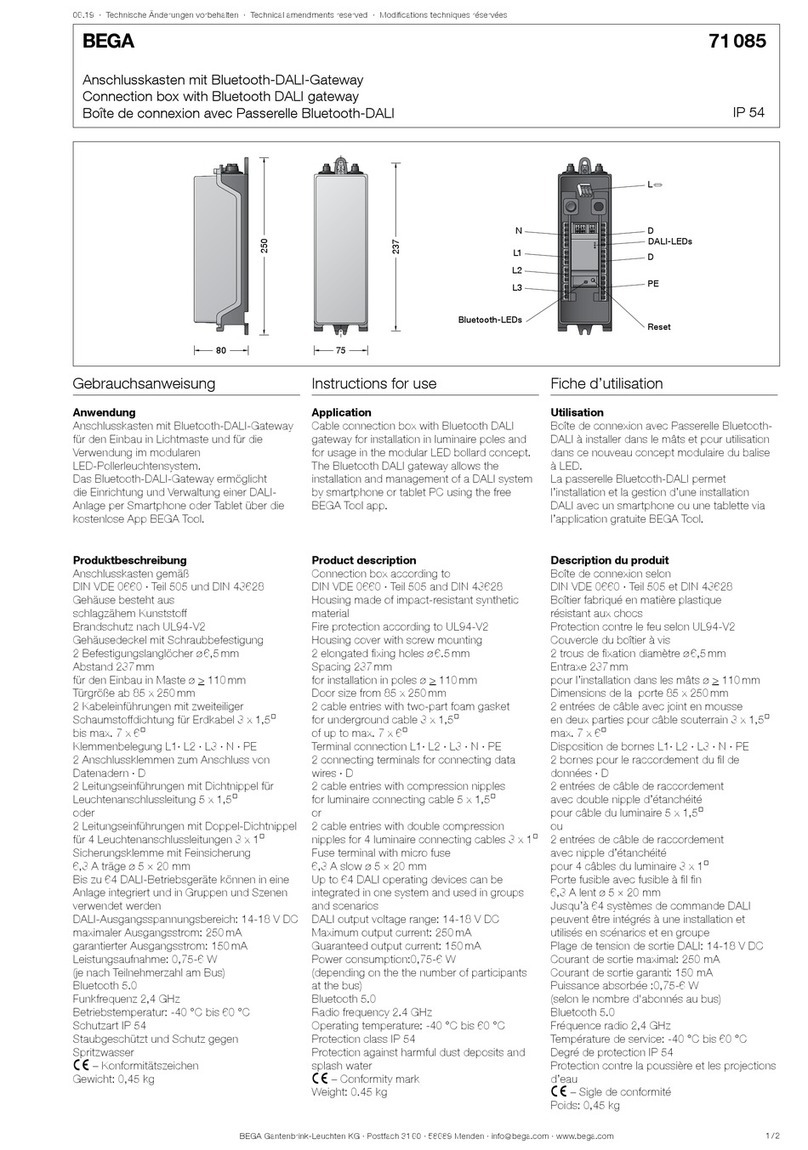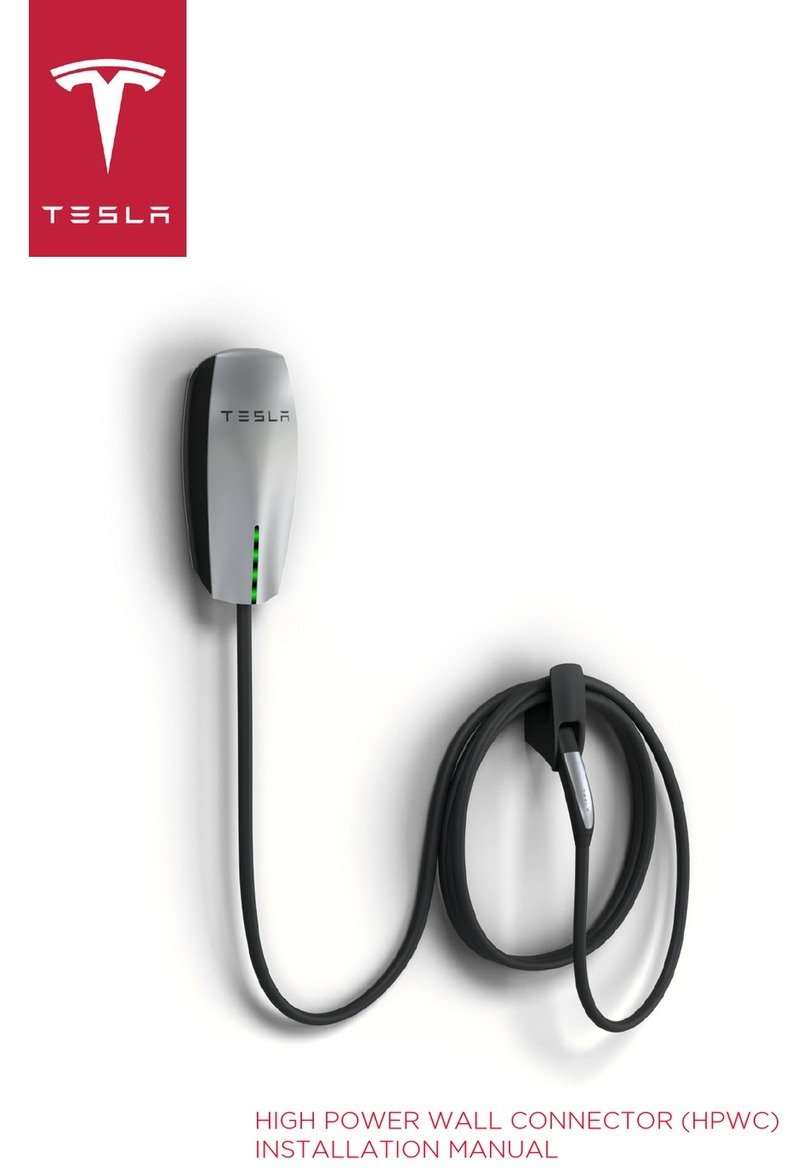
— Fiber Optic Cleaver 1871696–1 (Instruction
Sheet 408–10086)
— LightCrimp Plus LC Die Set with Crimping Tool
1754137–1 (consists of Die Set 1754136–1 and
PRO–CRIMPER III Hand Tool 2064431–1)
or
LightCrimp Plus LC, SC, and Splice Die Set with
Crimping Tool 2064603–1 (consists of Die Set
1985766–1 and LightCrimp Termination Handle
2064431–1
— 200 Microscope Kit 1754767–1
— 1.25–mm Universal Microscope Adapter
1754765–1
— reagent–grade isopropyl alcohol and
lint–free cloths (not included)
— Alcohol Fiber Wipe Packet 501857–1
1. Discard the tubing.
2. Slide the short boot (small diameter end first)
over the buffer. See Figure 2, Detail A.
3. Remove the rear protective cap from the
connector assembly, and discard.
4. Push the connector assembly into the holder of
the cable holder assembly with the termination
cover facing outward, making sure that the
connector butts against the lip on the arm of the
cable holder assembly. See Figure 2, Detail B.
5. Slide the buffer into the channel marked
“BUFFER”. Make sure that the tip of the buffer
butts against the end of the channel. Mark the fiber
at each cross–slot of the channel. See Figure 2,
Detail B. Then, remove the fiber from the cable
holder assembly.
For easy strip buffered fiber
, using the strip tool,
notch the fiber at the first mark. Then, grasp the
cut end of the fiber and, using a gentle pulling
motion, remove the buffer. If using the stripper,
notch the fiber at the first mark, then pull the buffer
off with the stripper. Strip the coating to the end of
the buffer with a single pass of the tool. If the
coating slides out relative to the buffer, carefully
push it back to the original position (flush with the
buffer). See Figure 2, Detail C.
For tight buffered fiber
, using the strip tool or
stripper, strip the fiber to the first mark. It is
recommended stripping the fiber in three sections.
See Figure 2, Detail C.
6. Clean the fiber with isopropyl alcohol and a
lint–free cloth to remove the fiber coating residue.
1. Open the fiber clamp of the fiber optic cleaver.
Press the button, and slide the carriage back
(toward the fiber clamp). Then move the fiber slide
back until it stops.
2. Place the stripped fiber into the slot so that the
end of the buffer is at the 8–mm marking. See
Figure 3, Detail A.
3. While applying pressure on the buffer, carefully
slide the fiber slide forward (toward the carriage)
until it stops. See Figure 3, Detail B.
4. Gently close the fiber clamp, and slide the
carriage forward. DO NOT touch the button while
sliding the carriage. See Figure 3, Detail C.
5. Open the fiber clamp, and move the fiber slide
back until it stops.
6. Remove the cleaved fiber, and properly dispose
of the scrap fiber.
1. Open the cable clamp of the cable holder
assembly, and position the fiber (with the cleaved
end facing the connector) inside the clamp. Move
the buffer so that the end of the fiber is even with
the front of the arm of the cable holder assembly,
and holding the buffer in place, close the clamp.
See Figure 4, Detail A.
2. Carefully insert the fiber into the plunger of the
connector assembly until the fiber bottoms against
the internal fiber. Make sure that the remaining
mark on the buffer enters the plunger. The
resultant bend in the fiber should hold the fiber
against the internal fiber. See Figure 4, Detail B.
E
®

